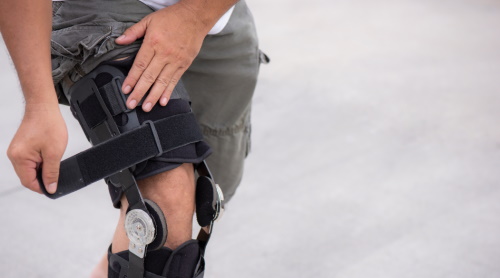Introduction
In today's busy workplace, guaranteeing the safety and security and well-being of staff members is extremely important. Among the vital elements of office safety and security is the stipulation of Automated External Defibrillators (AEDs). These lifesaving devices are essential for reacting to unexpected heart attacks, which can happen in any setup, including work environments. This detailed overview will explore the Workplace AED Demands in Australia, highlighting what every employer requires to learn about carrying out and keeping AEDs.
Workplace AED Needs in Australia: What Every Company Requirements to Know
Understanding the lawful and sensible needs surrounding AEDs is important for all employers in Australia. The Australian Resuscitation Council emphasizes that having an AED on-site can dramatically enhance survival rates during heart emergencies. Employers ought to acquaint themselves with their responsibilities under pertinent legislation, consisting of the Job Health and wellness Act 2011.
The Importance of Having an AED in Your Workplace
Every second matters when it involves a heart emergency. An AED can be the difference between life and fatality. According to studies, very early defibrillation improves survival rates by up to 70%. This underscores why it's not simply a great idea-- it's a necessity.
Understanding Automated External Defibrillator Explained Australia
An Automated External Defibrillator (AED) is a portable gadget that checks heart rhythm and can send an electric shock to the heart if necessary. The gadget overviews individuals through the procedure with voice prompts and aesthetic guidelines, making it useful also for people without clinical training.
How to Make use of an AED Detailed Australia
Using an AED entails a number of crucial actions:

AED and CPR With each other Australia
Combining mouth-to-mouth resuscitation with an AED enhances survival opportunities significantly. While awaiting an ambulance, executing mouth-to-mouth resuscitation keeps blood distributing, boosting oxygen supply to vital organs until defibrillation can occur.
AED Use on Children Australia
When using an AED on children, special pediatric pads are typically needed. Numerous modern tools come geared up with child-specific setups that adjust energy degrees based on age or weight criteria.
AED Battery Maintenance Australia
Maintaining your AED consists of examining battery status regularly, changing batteries according to maker guidelines, and ensuring pads are not ended or damaged.
Workplace AED Requirements Australia
Employers need to guarantee that:
- A suitable variety of AEDs are readily available based on office dimension and location. Employees have accessibility to training for making use of the device. Regular maintenance checks are carried out according to supplier recommendations.
Public AED Locations Australia
Many public areas currently feature obtainable AEDs; knowing where these areas are can save lives beyond office setups too. Local councils commonly keep databases of these locations.
Defibrillator Training Courses Australia
Training courses give vital understanding regarding using defibrillators efficiently along with CPR methods. Organizations like St John Ambulance deal accreditations that furnish staff members with lifesaving skills.
Defibrillator Legislation Australia
Legislation bordering defibrillators differs by state however normally mandates specific work environments, such as health clubs or aged care centers, to have AEDs easily available for usage throughout emergencies.

Choosing Right AED Australia
Selecting a proper design depends upon factors such as:
- Intended usage (office vs commercial) User-friendliness Availability of pediatric options
Identifying Prospective Catastrophes in Your Workplace
Employers should conduct danger evaluations frequently to determine potential medical emergencies unique to their environment-- this might include reviewing worker wellness risks or environmental risks affecting emergency situation action protocols.
FAQs
1. What is an Automated External Defibrillator?
An Automated External Defibrillator (AED) is a portable device made to treat people experiencing abrupt cardiac arrest by providing an electrical shock that helps restore normal heart rhythm.
2. Are there lawful demands for having an AED in my workplace?
Yes, while particular regulation might vary by state or territory, several areas need offices-- especially those considered risky-- to have access to automated outside defibrillators as part of their first aid provisions.
3. How commonly ought to I examine my work environment's AED?
It's recommended to examine your work environment's AED at least when a month and after each usage, ensuring that batteries are functional and pads are within expiry dates.
4. Can any individual utilize an AED?
Yes! Modern devices are developed for laypeople and offer detailed audio instructions; nevertheless, formal training is suggested for ideal readiness during emergencies.
5. What is consisted of in defibrillator training courses?
Courses normally cover just how to run an AED securely, perform mouth-to-mouth resuscitation successfully, recognize indicators of cardiac arrest, and react appropriately throughout medical emergencies.
6. Where can I find public gain access to defibrillators?
Public accessibility defibrillators can be discovered in numerous areas such as shopping centers, airport terminals, institutions, showing off places, and recreation center; regional authorities frequently keep maps showing these locations.
Conclusion
Ensuring basic first aid training Gold Coast office safety and security involves greater than just compliance; it has to do with cultivating a society of readiness among workers concerning health and wellness emergency situations such as heart attacks. Applying efficient plans around Automated External Defibrillators (AEDs) not only boosts your task of treatment but additionally shows dedication towards employee well-being-- a win-win situation!
In summary, comprehending the CPR Training Gold Coast important elements surrounding work environment AED demands in Australia outfits employers with understanding essential for producing much safer atmospheres for both productivity and well-being among team member-- because at the end of the day? Everyone is worthy of comfort knowing they're taken care of!